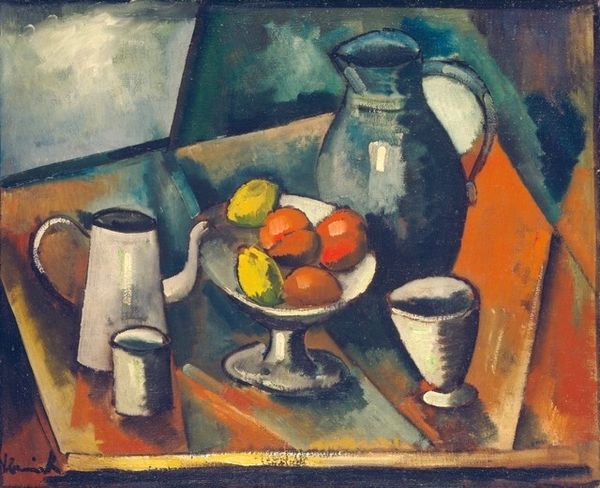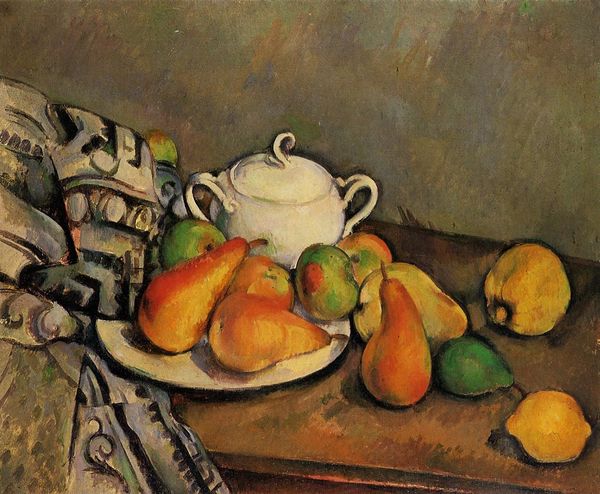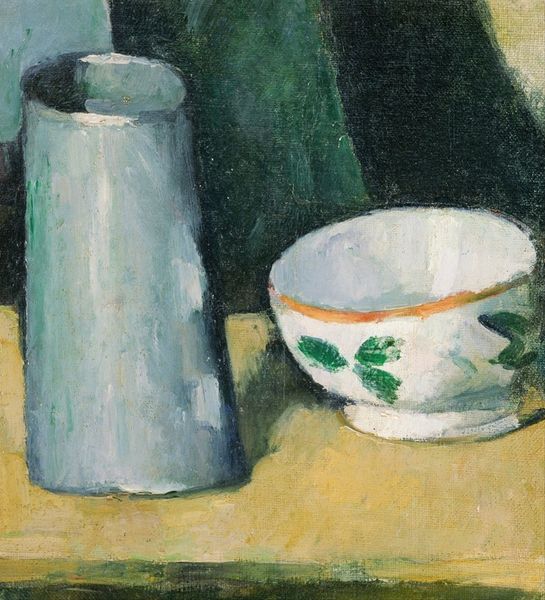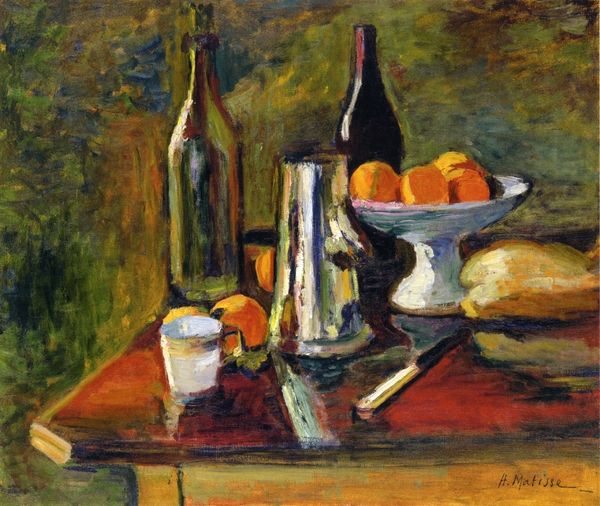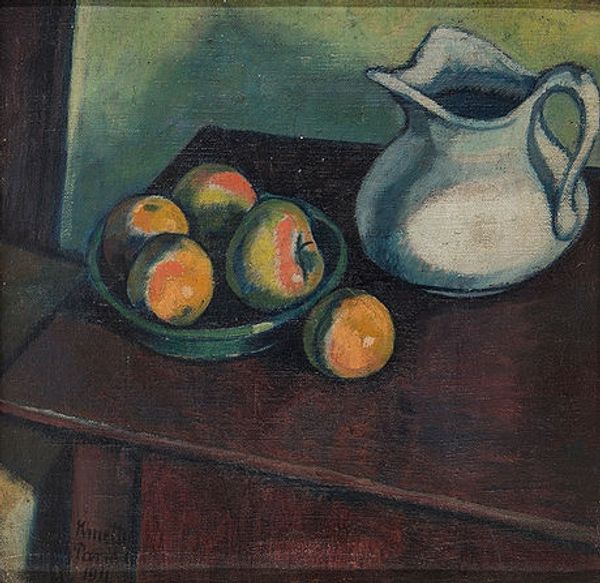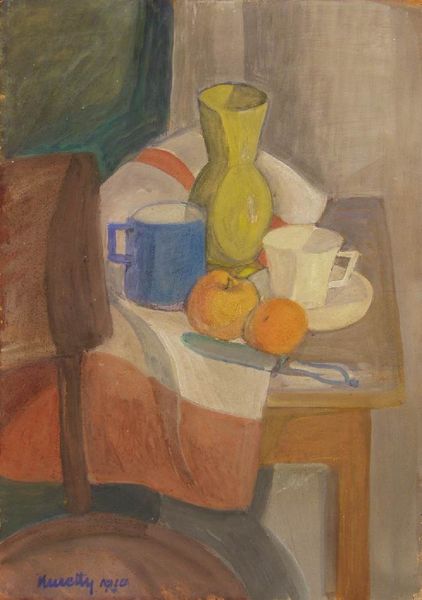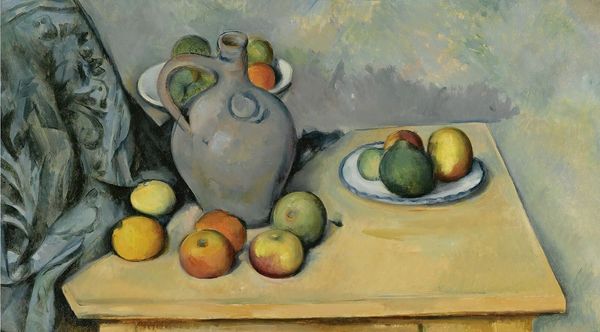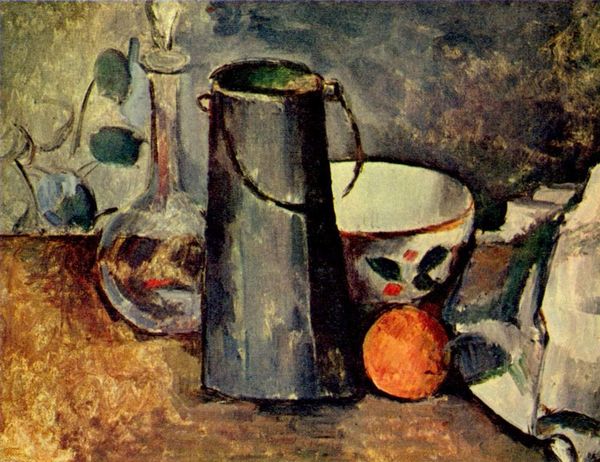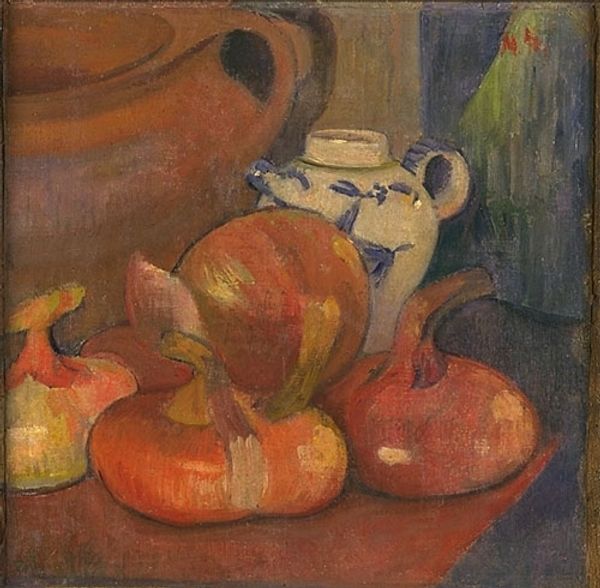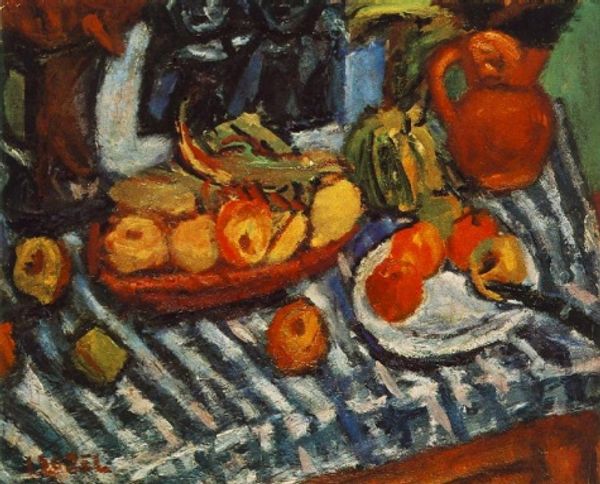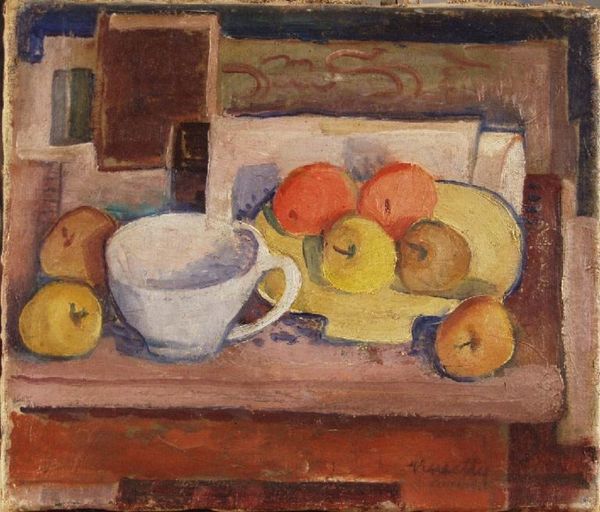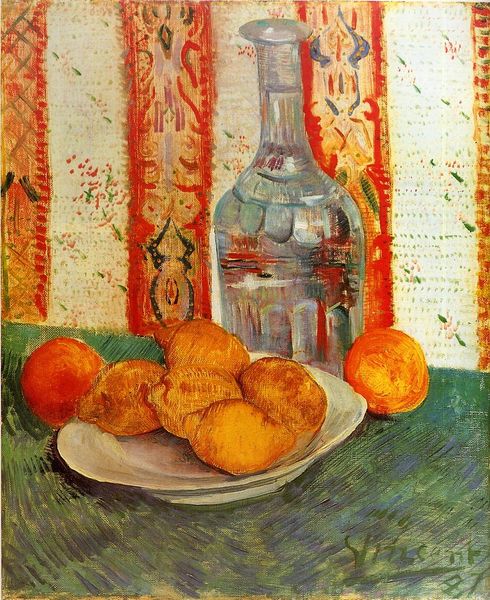
painting, oil-paint
#
painting
#
oil-paint
#
form
#
oil painting
#
intimism
#
post-impressionism
#
realism
Copyright: Public Domain: Artvee
Curator: Let's talk about Émile Bernard’s, “The Blue Coffee Pot,” an oil on canvas painted in 1888. At first glance, what strikes you? Editor: The sheer stillness, I think. There's a kind of hushed intimacy suggested by the objects gathered so closely. The very specific, almost severe, cobalt blue of the coffee pot seems to dominate everything. Curator: Indeed. This still life offers a glimpse into Bernard's experiments with form and color, emerging during the Post-Impressionist movement. Note how Bernard flattens the perspective, almost eliminating depth. We see the influence of Japonisme and Cloisonnism here. But how does that affect the work's reception? Editor: It lends the work a somewhat abstracted, symbolic quality. The arrangement—the stark blue coffee pot, the haphazard scattering of citrus, even the placement of the neutral ceramic jar in the background—all seem charged with potential meaning. Were coffee pots often used in still lifes? Was that significant? Curator: Certainly. Coffee was becoming increasingly ingrained in social rituals, so placing a coffee pot could function as an element of a discourse. Notice the arrangement of oranges; some lie scattered while others sit neatly on a plate with yellow citrus fruits. They could hint at domestic arrangements or the preparation of a shared meal. We can read social dynamics into the ordinary objects and see relationships represented through symbolism and material culture. Editor: The way Bernard plays with light here, creating these very distinct, almost theatrical, contrasts is compelling. There is a shadow around all objects, the contours are distinct. This accentuates a sense of isolated, quiet contemplation. Curator: Absolutely, and in Bernard’s early period, one can see these quiet interior scenes as spaces in which to understand contemporary relations in the world through private spaces. It certainly offers an intriguing reflection on modern life, still echoing in our lives today. Editor: I find myself considering the emotional value placed on mundane objects that populate our daily lives and personal interactions. I'm still mulling it over. Curator: Well, that is the fascinating impact of considering objects as historical records to contemporary practices. They're imbued with the complexities of our experiences.
Comments
No comments
Be the first to comment and join the conversation on the ultimate creative platform.
